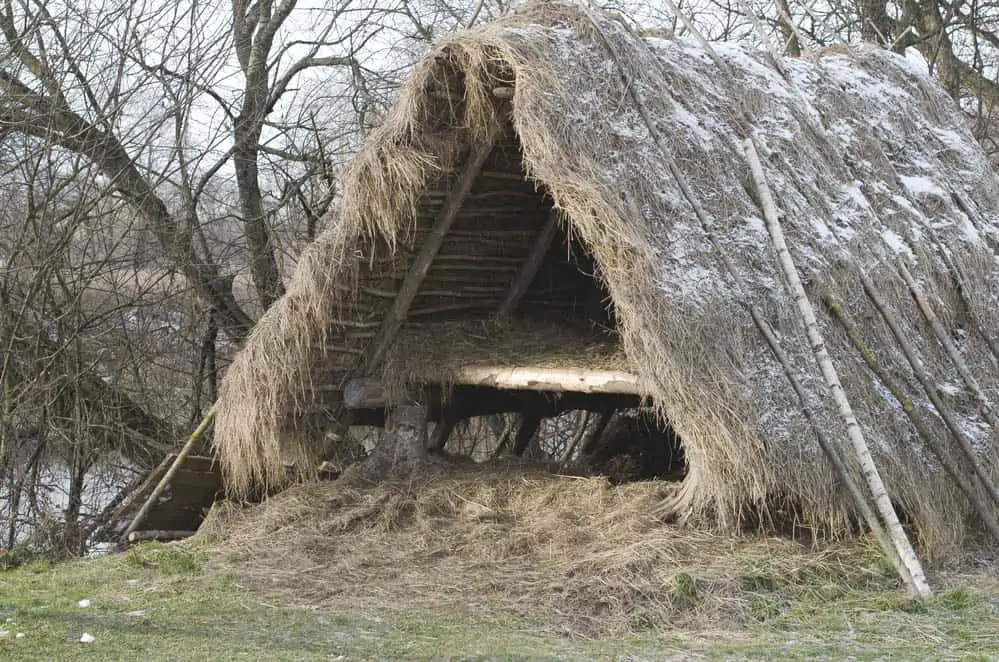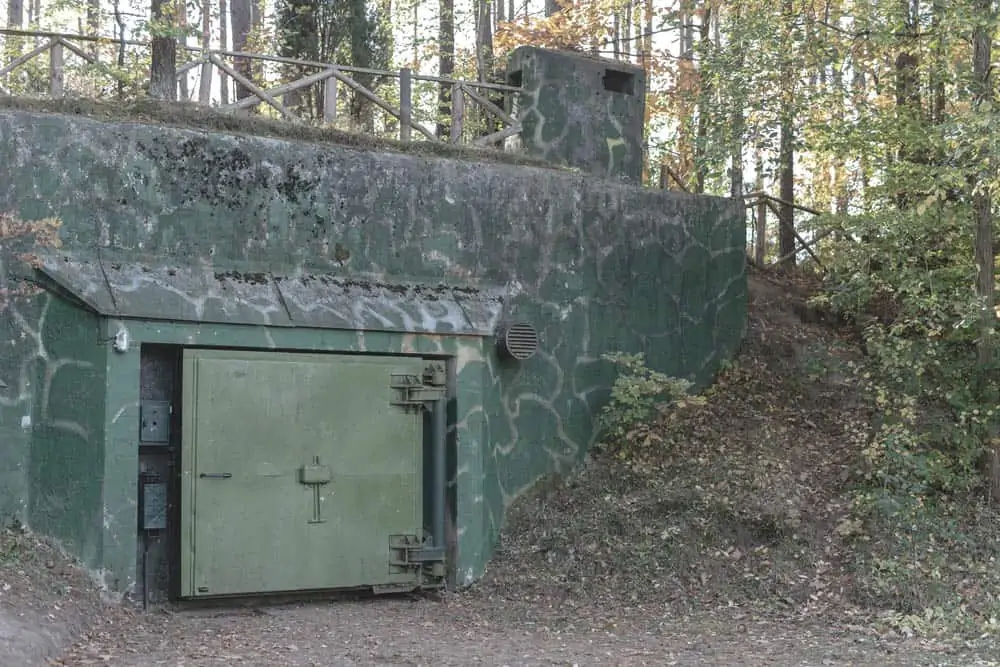When discussing survival shelters, there are two distinct categories. When someone mentions a shelter, they may be referring to improvised wilderness survival shelters. However, they may be referring to a permanent structure like a fallout shelter. While both of these shelters can save a life at the right moment, they are very different in their execution. Thus, it makes sense to discuss them separately.
Wilderness Survival Shelters
A wilderness shelter is just what it sounds like: an improvised shelter to protect you from the elements and other dangers. If you ever find yourself in a survival situation, your list of priorities is clear-cut. You must find a way to stay hydrated, regulate your temperature, and make progress towards escape. However, if you are lost for more than a few hours, shelter becomes a crucial element.
Here’s what you need to know to make the most of your energy and keep yourself safe.

Your Energy is a Resource
For the first few hours of a survival situation, adrenaline can become a driving motivator. You will likely be scared and attempt to react as quickly as possible to stabilize your situation. Although establishing shelter is a key element in survival, individuals are often too quick to begin building wilderness shelters.
Building a shelter must be done methodically and thoughtfully. Gathering the necessary resources to build a shelter requires a lot of energy, and building the structure isn’t exactly an afternoon nap either. Depleting your energy can be a dangerous situation, so it is important to consider what type of shelter you should actually build for the predicament at hand.
Build For the Task at Hand
We all have fantasies of building Robinson Crusoe-esque mansions out of twigs if we were ever in need. However, the reality is decidedly simpler. You must consider the environment carefully before beginning your shelter construction. What materials do you have on you? What materials are available? What are the temperature concerns? Are there other dangerous factors? When building improvised shelters, less is often more.
Always take an inventory of what you have on hand. This may sound like an obvious approach, but it is often easy to become distracted in the fear of the moment. Tarps make a fantastic shelter. Hiking poles can become excellent tent stakes. Even a jacket can be sufficient shelter for a mild enough climate. Don’t spend effort reinventing the wheel. If you can get away with not gathering materials, use that to your advantage.
What Style of Shelter is Best?
Outdoor enthusiasts are often eager to be prepared for any situation. This is a fantastic mindset to have, but it can lead to oversimplification. When considering a wilderness shelter, people often want to know what the best style is. Sadly, there isn’t a clear cut answer. If you find yourself in a snowy region, an igloo-style shelter (actually called a quinzhee) may be your best option. For a wet climate, a lean-to shelter made from leaves and twigs is probably your best bet. If heat is your concern, a leaf-hut to keep you from the sun is vital.
If you notice that this is a vague set of suggestions, that is entirely the point. There are so many variants and regionally-specific types of shelter that trying to summarize them would require books, not paragraphs. Ultimately, this is a situation where preparedness and research are the best tools. Although you may not have the luxury of knowing when you may find yourself in need of an emergency structure, you will almost certainly know the region you will be exploring. Before embarking on an expedition, always do your due diligence to find the most effective shelter style for that area. Local knowledge will almost always be superior to generalized guide books, so don’t be afraid to ask around.
The goal should never be to have an encyclopedic knowledge of every possible shelter. Rather, the goal is to have a specific plan in mind that can be easily executed in an emergency. Once you’re in need, you can simply execute the plan you already have.
Permanent Survival Shelters
Another permutation of survival shelters is permanently installed versions. Of course, these are designed to fulfill a distinctly different goal compared to improvised wilderness shelters. Yet, this distinction makes them no less important. Permanent bunkers are often regarded as the most effective means of protecting yourself and your family, but the variety depends a little on the threat. These spaces can be designed to protect the occupants from any number of catastrophes. Tornadoes are the most common usage, but bomb threats and even nuclear fallout are very real possibilities that can only be mitigated by having a proper bunker in place.

The Purpose of Underground Survival Shelters
Building an underground bunker may seem like an extreme measure to some, but the concept is wholly rooted in logic. The vast majority of disasters, whether they be storms or bombs, have one thing in common: there is a lot of force to mitigate. Constructing an above-ground building that can withstand these dangers would be hugely expensive, but submerging a shelter makes the prospect much easier. The earth is naturally equipped to absorb impacts and shield from radiation, so going underground simply makes sense.
What Does it Take to Build an Underground Bunker?
The beauty of these underground shelters is that they can be as simple or as elaborate as your desires and budget allow. Whether your goal is a bomb shelter or a storm refuge, having a simple area where your family can huddle for safety can be a surprisingly affordable prospect. There are even portable survival shelters that provide this protection without the complexity of permanent installations. If you are alright with roughing it for a few days, a simple shelter to store food and ride out a storm can be procured for less than a decent used car.
Yet, like most things in life, your imagination is truly the limit. There are many companies such as Atlas Survival Shelters that can build truly stunning bunkers for any need. If your goal is to have an entire self-sustaining mansion underground, they can provide that. Want a storm shelter that happens to double as a movie theater or a pool hall? They can do it. While this style of shelter may seem overly complex, there is actually some validity to the concept.
Depending on the threat, you may be required to stay in your bunker for some time. Hopefully, this period can be measured in hours, but months are unfortunately a possibility depending on the impact of geopolitical upheaval. To this end, investing in a shelter to protect your family and provide as much comfort as possible is money well spent.
A Shelter for Every Need
Although this has been a wide-ranging conversation, there is one clear theme throughout: preparedness. Whether you need a simple hut to sleep for the night or you need a complex life-support system to keep you safe in a nuclear war, planning is key. A proper shelter can be the difference of seeing tomorrow, so always have a plan.
I’m Nebojša, a seasoned digital marketing professional with over 15 years of experience. My writing covers a diverse range of topics, from technology and gaming to app development and automobiles, all while delving into the intricacies of SEO optimization. Beyond the digital realm, I find solace in nature, inherited from my father’s love for the outdoors. His passion for hunting has influenced me, adding another layer to my appreciation for the natural world.